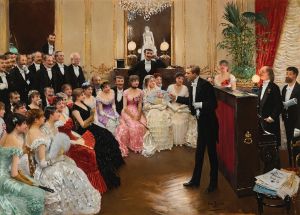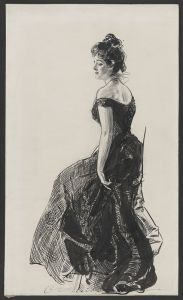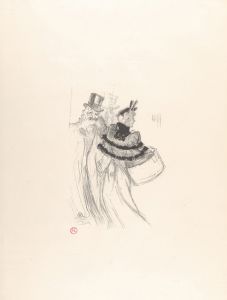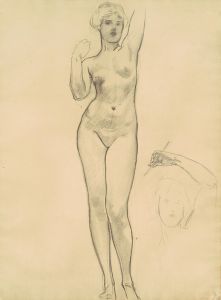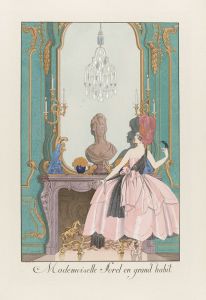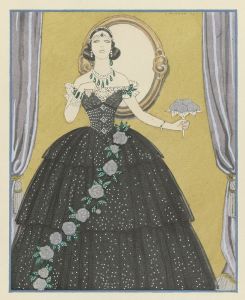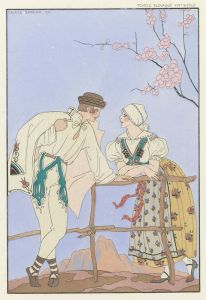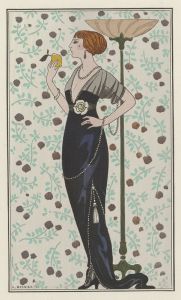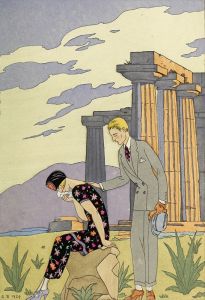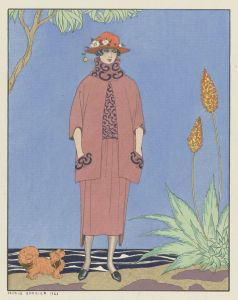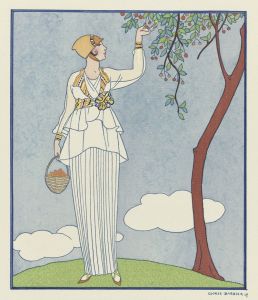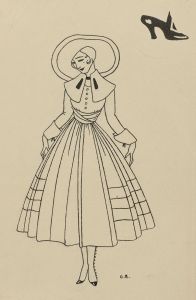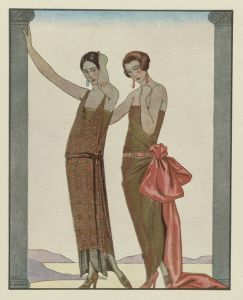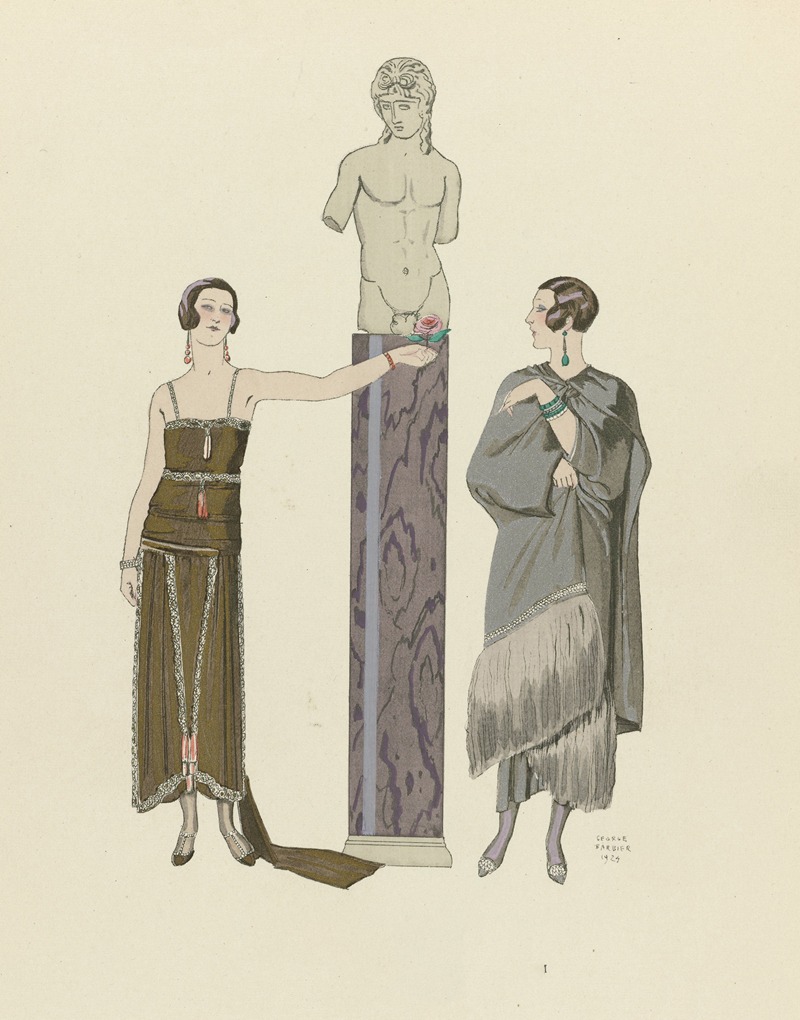
Eros ; Robe et manteau, pour le soir, de Worth
A hand-painted replica of George Barbier’s masterpiece Eros ; Robe et manteau, pour le soir, de Worth, meticulously crafted by professional artists to capture the true essence of the original. Each piece is created with museum-quality canvas and rare mineral pigments, carefully painted by experienced artists with delicate brushstrokes and rich, layered colors to perfectly recreate the texture of the original artwork. Unlike machine-printed reproductions, this hand-painted version brings the painting to life, infused with the artist’s emotions and skill in every stroke. Whether for personal collection or home decoration, it instantly elevates the artistic atmosphere of any space.
Eros; Robe et manteau, pour le soir, de Worth by George Barbier is an illustration created by the French artist and illustrator George Barbier. This work is part of Barbier's extensive contributions to the world of fashion illustration during the early 20th century. Known for his Art Deco style, Barbier was a prominent figure in the fashion and decorative arts scene, producing illustrations that captured the elegance and sophistication of the era.
The title of the work, "Eros; Robe et manteau, pour le soir, de Worth," translates to "Eros; Dress and Coat, for the Evening, by Worth." This indicates that the illustration was created to showcase an evening ensemble designed by the House of Worth, a leading Parisian fashion house of the time. Founded by Charles Frederick Worth in the mid-19th century, the House of Worth was renowned for its luxurious and innovative designs, often catering to European royalty and high society. By the time Barbier created this illustration, the fashion house was under the direction of Worth's descendants, who continued to uphold its reputation for elegance and craftsmanship.
Barbier's illustration reflects the opulence and refinement associated with both the Art Deco movement and the House of Worth. The depiction of the evening attire is characterized by intricate detailing, flowing lines, and a sense of theatricality, all hallmarks of Barbier's artistic style. His works often combined elements of classical mythology, exoticism, and modern fashion trends, which is evident in the title's reference to "Eros," the Greek god of love.
This illustration was likely published in a fashion journal or portfolio, as Barbier frequently collaborated with magazines such as Gazette du Bon Ton and Journal des Dames et des Modes. These publications were instrumental in disseminating high fashion to an elite audience, and Barbier's illustrations played a key role in shaping the visual culture of the period.
While specific details about the exact date of creation or the context of this particular illustration are not readily available, it is consistent with Barbier's body of work, which flourished during the 1910s and 1920s. His contributions to fashion illustration remain celebrated for their artistic merit and their ability to encapsulate the glamour of the early 20th century.
This work is a testament to the collaboration between artists and fashion designers during the Art Deco era, highlighting the interplay between visual art and haute couture.





